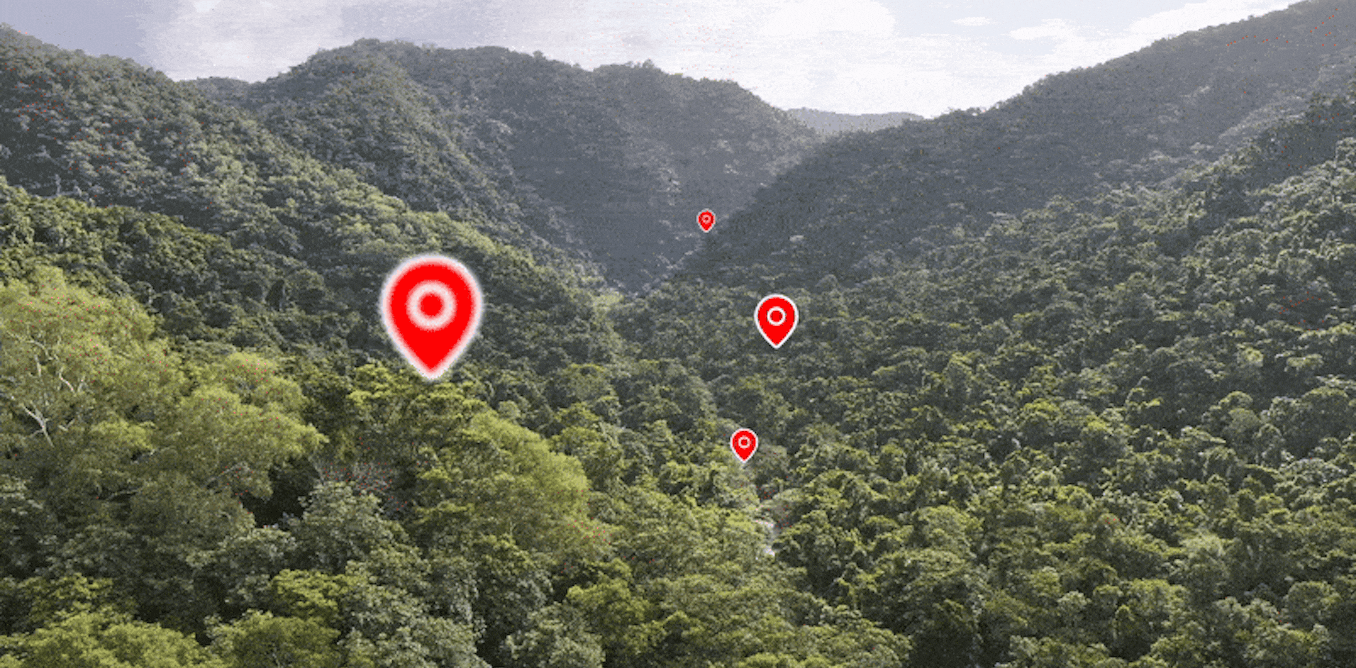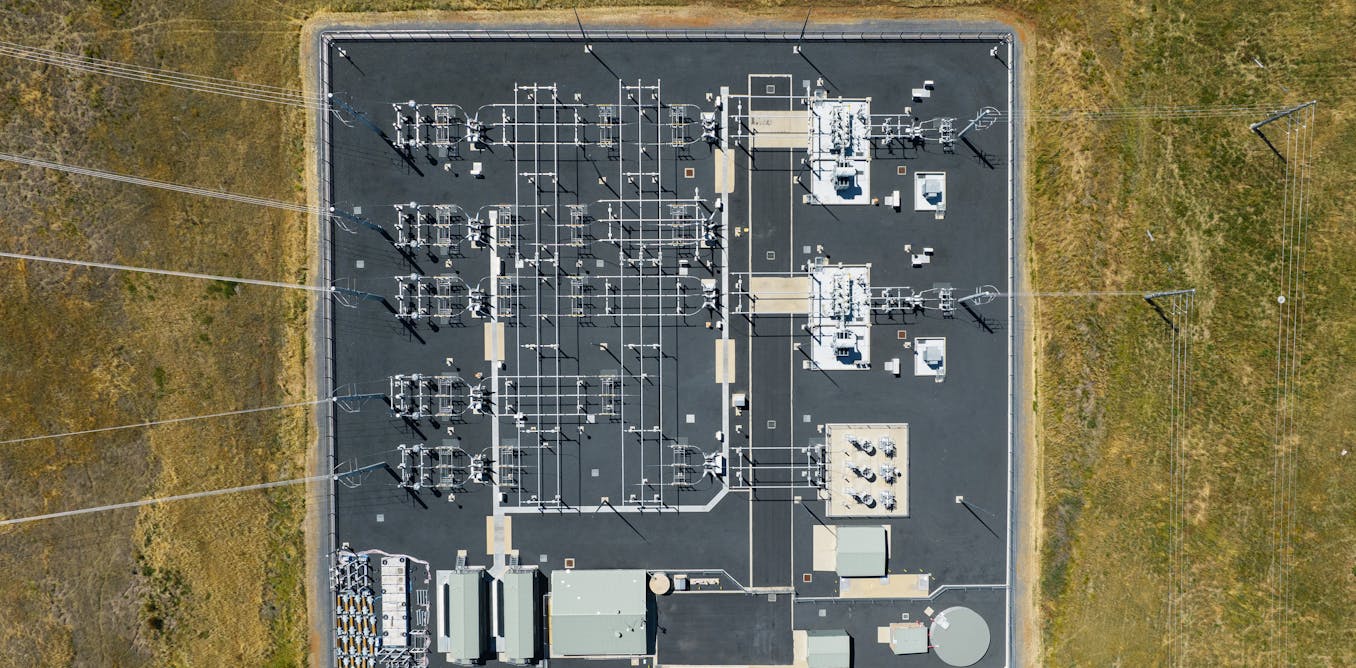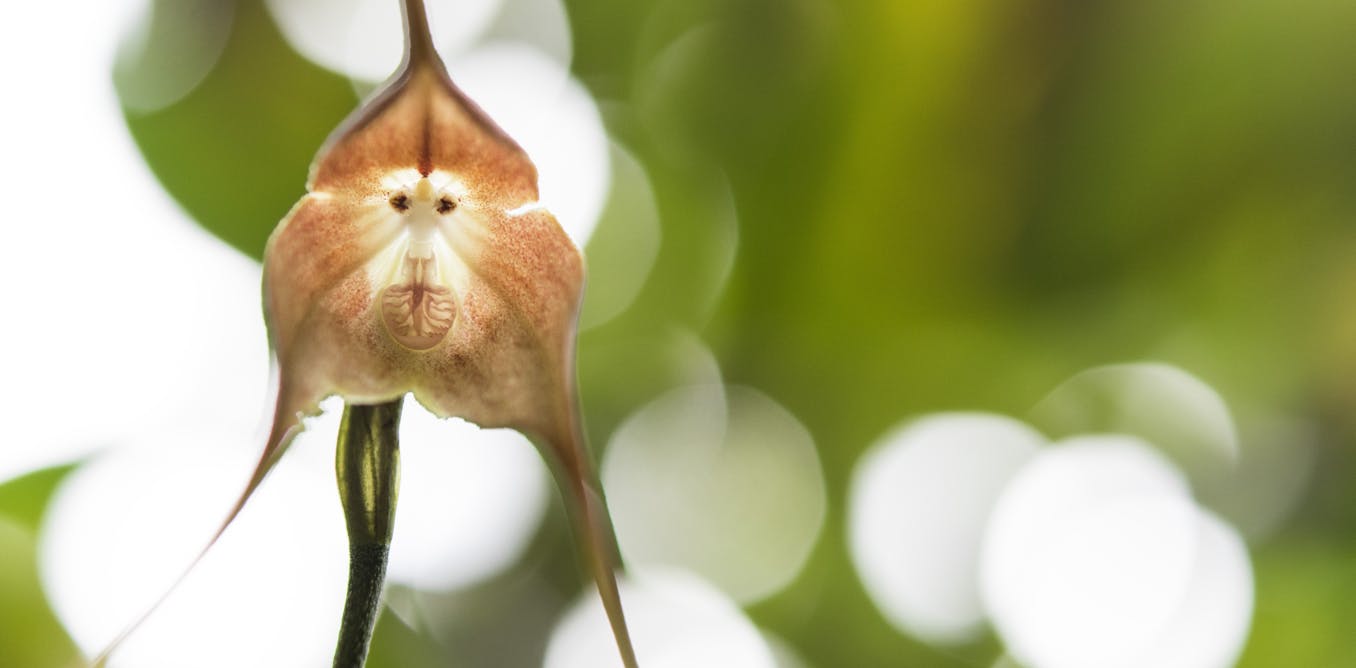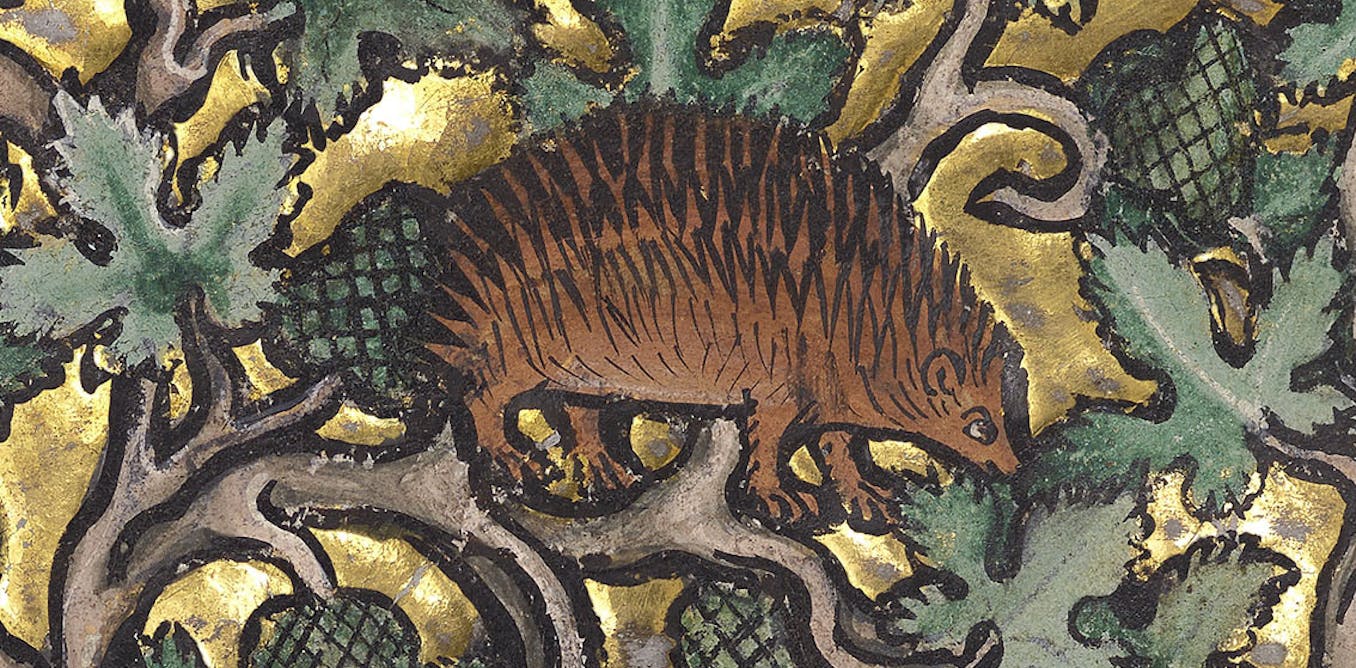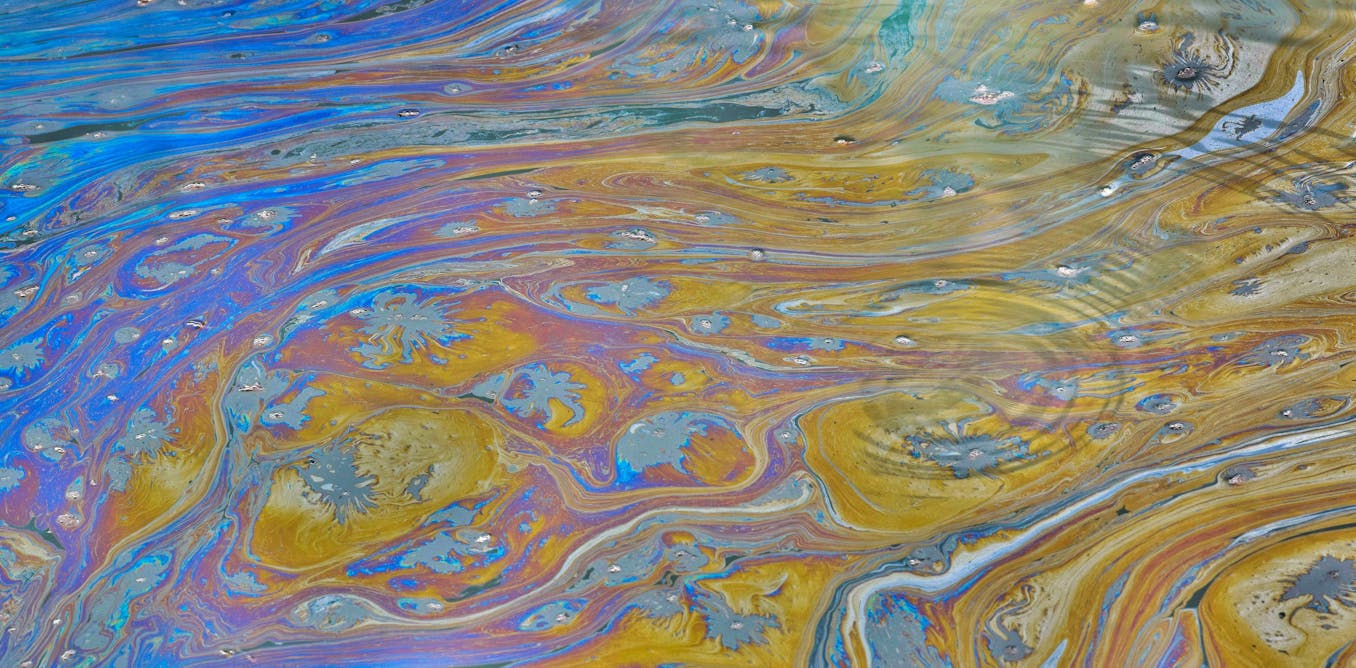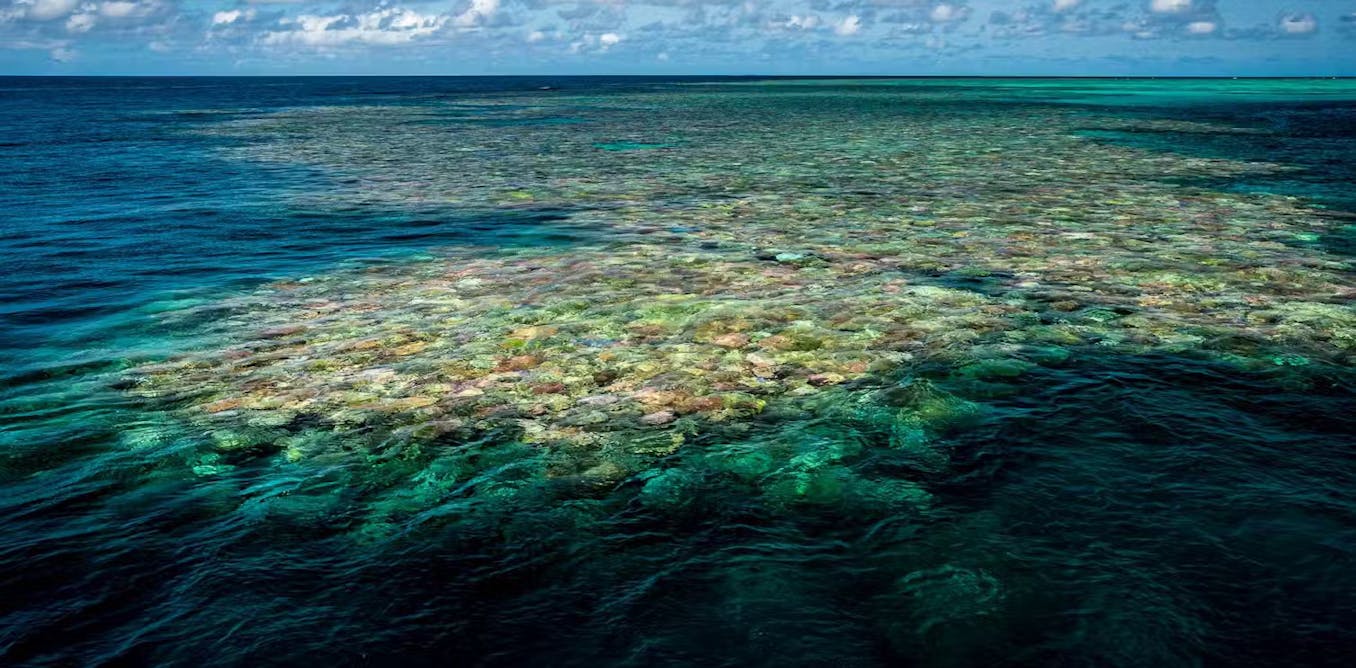Scotland is a land full of history, natural beauty, and rich culture, making it a must-visit destination for travelers. From the bustling cities of Glasgow and Edinburgh to the serene landscapes of the Highlands and Lochs, there is something for everyone in Scotland.
The video titled SCOTLAND Ultimate Travel Guide 2024 🏴 offers a comprehensive overview of the top attractions in Scotland, from the historic sites like Edinburgh Castle and Stirling to the breathtaking natural wonders like Loch Ness and Ben Nevis. The video takes you on a journey through the different regions of Scotland, showcasing the diversity and beauty of this incredible land.
Whether you are a history buff, a nature lover, or simply looking for a unique travel experience, Scotland has something to offer. With its charming towns, picturesque landscapes, and friendly locals, Scotland is a destination that will capture your heart and leave you with memories to last a lifetime.
So pack your bags and get ready to explore the incredible land of Highlands and Lochs with this ultimate travel guide to Scotland in 2024. Don’t miss out on the chance to discover the magic of Scotland and create unforgettable travel experiences. Scotland is waiting for you!
Watch the video by World Travel Guide
Scotland has outperformed the rest of the UK during the past ten years in drawing tourists to its popular attractions. Few places embody the “middle of nowhere” quite as poetically as Scotland, with its beautiful highlands, clear lochs, and windy islands where the only sound is the breeze rushing through stone
Crags. There is so much to discover here, so let’s start this journey! Glasgow is Scotland’s biggest and most temperamental city. It has traditionally been overshadowed by Edinburgh in terms of tourism. This is partially due to Glasgow’s reputation, which is rooted in its cliches, just like the fierce rivalry between Celtic and Rangers,
Two of its football teams. The city benefited greatly from the industrial revolution, and became a real treasure trove of Victorian architecture. It was heavily devastated during World War II, and constantly marginalized compared to Edinburgh. To be honest, Glasgow is nowhere near as pretty
As its rival, but it has its own working class charm. George Square awaits everyone arriving at Queen Street Station. The square is the most popular place for protest and celebration and helps in directing tourists around the city center. A shortage of options for accommodation
In Glasgow is arguably the clearest indication of the city’s lack of tourists. The majority of visitors don’t even stay here. The trip to Loch Lomond is only a short drive away, and Central Station serves as your entry point to the west Highlands. The street art of Glasgow is
Surely among its top tourist attractions. The urban artworks that have brought life to the city center’s walls and corners may be seen by following the City Center Mural Trail. Dinosaur skeletons and Salvador Dali’s artworks are among the astounding 8,000 items displayed
At the Kelvingrove Art Gallery and Museum. One outstanding example of Gothic architecture is the Glasgow Cathedral. It is the only cathedral that has withstood the Reformation of 1560 on the mainland of Scotland. Glasgow is crossed by the second-longest river in Scotland, the River
Clyde. It was crucial to the economic development of the city since it made it possible for ships to deliver goods to marketplaces all over the world. Glasgow is the best shopping city in the UK after London. In the heart of the city there are many prominent shopping centers and flagship stores.
Since it became Scotland’s capital in the fifteenth century, Edinburgh has had a special place in the hearts of Scottish people. King David I founded Edinburgh in the twelfth century, and made it one of the country’s first royal burghs. Today, both the New Town and the Old Town
Are UNESCO World Heritage sites. There are a ton of things to see and do in this city, which is the second-most visited in the UK. Standing on Castle Rock, an extinct, 400 million years old volcano, is the iconic Edinburgh Castle. Built during the 12th century, it proudly looks out over the
Old Town of the city. In fact, this is the most famous building in all of Scotland, and you could easily spend several hours here discovering the history of the castle. The Crown Jewel exhibit, in particular, is well worth its price. There are so many historical buildings and monuments in the
Area. On the outskirts of Edinburgh stands an old extinct volcano known as Arthur’s Seat. At a height of 250 meters, it offers hikers an amazing view of the city. There are restaurants and shops lining the pedestrian-only Royal Mile. It has a very historic vibe, despite being crowded all
Year long. The National Museum Scotland is a great place to learn more about Scotland. You’ll go on an expedition of discovery exploring Scotland’s past as well as the wonders of science, technology, and nature through the exhibitions here. With its wide parklands, royal estates,
And the botanic garden, Edinburgh is also the greenest city in Scotland. There are several large-scale festivals held in the city during the summer, with the Edinburgh Fringe Festival being the most popular. This arts festival, which takes place in August, presents all kinds of artists and
Performers. Edinburgh is a rather small city that is just perfect for sightseeing on foot. Walking from the city center to some of the sites on the periphery takes as little as thirty minutes. In the heart of Scotland, where the Highlands and Lowlands meet, you’ll find the city of Stirling.
It was founded as a Royal Burgh in 1124. For anyone with even a slight interest in Scottish history and heritage, Stirling provides a fascinating trip down memory lane. Under the leadership of William Wallace and Andrew Moray, the Scots triumphed over the English army at
The famous Battle of Stirling Bridge in 1297. Of course, the Stirling Castle is the biggest attraction of Stirling, visible from miles around the city. The Castle has been expanded, modified, and improved by several Scottish monarchs throughout the years, and served as their
Royal residence. Mary, Queen of Scots, was crowned here in 1543. Long into the eighteenth century, Stirling Castle was a military stronghold and was also involved in the Jacobite Risings. The Church of the Holy Rude is another pearl in the city’s crown, sitting close to the castle. Built in the
Twelfth century, it’s one of the oldest buildings in the region. The National Wallace Monument honors the life of Sir William Wallace, the famous Scottish patriot. The monument stands on Abbey Craig, a little distance outside of Stirling, and provides a view of the site of Wallace’s
Greatest victory, the Battle of Stirling Bridge. The stories of the battle, and the legacy Wallace left behind, are presented in the Monument’s exhibition galleries. You can see his legendary battle sword, and enjoy the views from the tower. The Galloway Forest Park surely has to be at the
Top of your list, if you’re looking for some of Scotland’s most amazing landscapes. It’s located 85 kilometers south of Glasgow. The Park, which opened in 1947, is also called “the Highlands of the Lowlands.” Around one million people visit it annually. Countless hiking paths and the famous
Grey Man of the Merrick may be found in the park. Bruce’s Stone stands on a gorgeous vantage point with a view of Loch Trool’s shimmering waters. It honors Scotland’s King Robert the Bruce, and the Battle of Trool in 1307. Here in the park, you can have a picnic beside an idyllic loch,
Drive through spectacular landscapes and encounter red deer and wild goats. Not only is this Scotland’s first Dark Sky Park, but it’s also among Europe’s greatest spots for stargazing. The 7stanes mountain biking routes are great for both beginner and expert riders. Every year,
More than 500,000 tons of timber are collected, making the trees an important source of income. Halfway between Edinburgh and Glasgow, on Scotland’s Central Belt, sits the town of Falkirk. It was formerly an important outpost along the Antonine Wall, which stretched from
The River Clyde to the Firth of Forth and was the Roman Empire’s northernmost frontier. Two major battles took place at Falkirk, as part of the Wars of Scottish Independence: the Battle of Falkirk in 1298 and the Battle of Falkirk Muir in 1746. The Falkirk region is known for its unusual accent,
Which combines Scots, English, and Scottish Gaelic. The Helix park has 30 meters tall horse-head sculptures called The Kelpies. Needless to say, it’s the world’s biggest sculpture of a horse. The fabled shape-shifting ghosts who live in Scotland’s lochs and pools were the inspiration
Behind this landmark. Usually appearing as a horse, they may be controlled by anybody who manages to seize hold of their bridle. There is just one rotating boat lift in the world, and that is the Falkirk wheel. For the first time since the 1930s, Glasgow and Edinburgh were
Reconnected in 2002 by a canal system. Back in the day, you needed a whole day to pass, but the Falkirk wheel elevates a boat in a matter of minutes. You may discover the town’s historic landmarks and natural beauty by walking the Union Canal Towpath and the John Muir Way. Regular buses
And trains departing from Glasgow and Edinburgh will get you to Falkirk in less than an hour. Since the attractions are quite far apart, driving to the town is perhaps the better option. Loch Lomond is a freshwater loch, and part of the Trossachs and Loch Lomond National
Park. The National Park is really worth visiting further since it has some of the most breathtaking landscapes and occupies around 1800 square kilometers. Set in southern Scotland, it takes around an hour to get there by car from Glasgow. Its basin was formed around 10,000 years ago, near
The end of the last ice age, when glaciers carved it out. There are 27 islets and 22 islands in its waters. Because of the size of the National Park, almost half of all people in Scotland live within an hour’s drive from the park! Loch Lomond is the third deepest loch in Scotland, reaching a maximum
Depth of 190 meters. Water skiing, kayaking, swimming, and sailing are all quite popular, and hikers will love The West Highland Way or The Three Lochs Way. Additionally, you might be able to see some of Scotland’s rarest animals, such as red squirrels, pine martens, and deer.
Serving as a junction for travelers heading to the Inner and Outer Hebrides, the town of Oban is best known as the “Gateway to the Isles.” With a view of Lismore, Kerrera, and the Isle of Mull, it sits
On the Firth of Lorn. Just over 8,500 people live in the town of Oban, but during the summer months, up to 30,000 people can be accommodated here. The lively harbor draws both tourists and commercial fishermen to the area. Being the “Seafood Capital of Scotland,” the town is worthy of its title
Since it has some of the freshest seafood and several restaurants that have won awards. The most notable landmark of Oban is McCaig’s Tower. The tower was constructed in 1897 as a permanent memorial to the McCaig family and as a source of income for local stonemasons by the local banker
John Stuart McCaig. The breathtaking views of Oban Bay make the climb to the tower from the town center well worth the effort. The town is home to galleries, a museum, and even a ruined castle that is reachable by walking along the waterfront. The Isle of Mull is the second biggest island
Of the Inner Hebrides. It has gained a lot of popularity as a holiday spot, especially among wildlife lovers. The island is perhaps best known for the colorful harbor of Tobermory, it’s capital, which is located at the northern end. Among the most popular attractions on Mull are
The brightly painted houses that line the harbor of this charming town. Tobermory is also the island’s largest community by far and popular among visitors of all sorts. Despite not having many high peaks, Northern Mull is nevertheless wild, with some nice paths to satisfy the hikers.
Numerous paths in the woodland and along the ocean may be found in the area around Tobermory, while the coastline gets wilder towards the west. Not only is Calgary Bay known for its excellent beach, but the entire region offers stunning views of the coast. Located on the Sound of Mull shore,
The medieval ruins of Aros Castle are visible from the village of Salen. With accommodation, a post office, restaurants, and other services, Salen is Mull’s center for travelling to all other parts of the island. The 13th-century Duart Castle, standing on a rock overlooking
The Sound of Mull, is one of the island’s most noteworthy historical attractions. Red deer are found all around the island, however, many of them move up to the higher moorland in the summer to eat on the nutrient-rich highland plants. Fort William is the largest town in the Highlands.
In and around the town, there are around 10,000 people who work and reside. Originally established in the 17th century as a garrison settlement, it rose to prominence in the 18th century with the building of Fort William, a military fortification during the Jacobite uprisings. By visiting the Old
Inverlochy Castle, a 13th-century ruin that saw two battles in the 17th century, you’ll get a peek into Fort William’s medieval past. You should also visit the West Highland Museum to discover more about Fort William’s culture and history. It has displays on the Highland clans and the
Jacobite rebellion. Connecting Fort William and Inverness, the 60-mile Caledonian Canal goes past some of Scotland’s most picturesque lochs. You may rent a kayak or take a boat to cruise down the canal. The Jacobite Steam Train travels the West Highland Line from Fort William to Mallaig,
And is a must-see for fans of Harry Potter. Tired of horizontal walks? Then you should visit Ben Nevis, the highest mountain in Scotland and the entire United Kingdom. Ben Nevis is located close to Fort William in the Highland district of Lochaber, at the western foot of the Grampian
Mountains. The summit reaches an impressive height of 1,345 meters above sea level. Every year, around 130,000 climbs are accomplished. The majority of climbers use the popular Mountain Track, which begins in Glen Nevis. There are some really amazing 700-meter cliffs on the north face.
Here, vertical cardio is everything. The air gets thinner as you go up, but at least the gorgeous views are inversely proportionate to your oxygen levels. The summit ground is surprisingly very huge, and sometimes you’ll find hundreds of people resting there. Standing on top of a
Former volcano, the peak was originally home to an observatory from 1883 until 1904. The meteorological information gathered during this time is still essential for evaluating the weather in Scottish mountains. Hiking to the top of Ben Nevis is best done in the summer months, if you
Are an amateur hiker. There is a possibility of snow at the summit throughout the year. However, during the winter, the peak is covered with a heavy layer of snow and ice, which covers the routes and makes the ascent quite dangerous. Originally the seat of the Macdonald clan,
Castle Tioram was built in the 14th century. Highland clans were landowners that distinguished themselves from other clans by wearing a tartan and clan crest that was unique to them. This is an important location where the River Shiel and Loch Moidart meet, and archeological evidence
Points to the presence of Vikings in the past. Since it controlled the major trade routes from Skye and the South Hebridean islands, this fortress was essential to the area. It lies around 80 kilometers west of Fort William. At high tide, the sandbar that connects it to the mainland
Turns it into an island. The castle is now a ruin, and because of the risk of falling stones, the inside is closed to the general public. Its interior is much larger than it appears to be from the outside. The castle has a pentagonal curtain wall, and was built directly onto the top
Of the rock at the highest part of the island. Despite being a small village, Glenfinnan has gained worldwide attention for a number of reasons. First of all, here in Glenfinnan, the tale of Bonnie Prince Charlie’s fight for the British trone gained momentum. This location,
As well as the clansmen who battled for the cause, are honored by the Glenfinnan Monument. Alexander MacDonald of Glenaladale constructed it in 1815. The entire tale is told at the Visitor Center, which is open April through October. The Glenfinnan Gathering is held annually in
August next to the monument. The next landmark that you will undoubtedly recognize is the famous Glenfinnan Viaduct, which connects the railway with the Glenfinnan Station. It was designed by the prominent rail and road engineer Robert McAlpine, better known as Concrete Bob. The viaduct is 30 meters above ground and 400 meters long. The Jacobite steam train travels
From here to Fort William and Mallaig in the summer, and regular trains are available all year round. This place is also famous for appearing in two Harry Potter films. Named for the River Coe that flows through it, Glencoe is arguably the most famous valley in
Scotland. It lies in the Highlands and was formed by volcanic activity. The glen’s idyllic beauty has led to its inclusion in the Glen Coe and Ben Nevis National Scenic Area. The Glencoe ski area, maybe better known as White Corries, is located on the eastern side of the glen.
With the construction of the first overhead ski lift in 1956, Glencoe became the first commercial Scottish ski area. The Glencoe Mountain Resort has the longest and steepest runs in Scotland, which are perfect for skiers and snowboarders. Set on the western edge of the valley, the village of
Glencoe offers some accommodation choices. The glen has three approved campsites, and there are also several spots where wild camping is permitted. It’s often said that the trip to Glencoe is just as enjoyable as the destination. There are many spots to stop and stretch
Your legs on the scenic journey from Glasgow. Originally founded during the 1800s herring boom, Mallaig is a tiny working fishing port that later benefited from the construction of the West Highland railway. The local marina is the perfect starting point for seeing some
Of Scotland’s most breathtaking and secluded landscapes. It’s a paradise for sailors wishing to explore the breathtaking northwest coast of the country. The port is busy these days, not much of an attraction, but pleasant enough. The Mallaig Heritage Centre offers information
About the region’s long and interesting past for anyone who’s interested in history. The Knoydart peninsula, sometimes described as “Scotland’s last wilderness,” is located just north of Mallaig. Throughout the summer, there are morning, afternoon, and full-day boat trips from Mallaig pier to Knoydart and the Isles, if you’re interested in a guided boat trip.
The largest and perhaps the most famous of Scotland’s Inner Hebrides is the Isle of Skye. This island, which is the second biggest in Scotland, is a huge patchwork of velvet moors, craggy mountains, dazzling lochs, and towering sea cliffs. Furthermore, Skye ranks as Scotland’s
Third most popular tourist destination overall. The people of Skye are spread out among the island’s several villages and towns. Skye’s population fell sharply from over 20,000 to about 9,000 during the 19th-century Clearances. The Old Man of Storr, a massive rock standing on a hill,
Is the most famous sight on Skye. You can hike to the top, and it will take you around 40 minutes to reach this wonderful place. Once there, the panorama is breathtaking. You will get a view
Of the surrounding islands and the sea. In the far north of the Isle of Skye sits the stunning hill formation known as Quiraing. Despite being somewhat high up, it is accessible by road. Neist Point, the westernmost point of the Isle of Skye, is a breathtaking viewpoint with a lighthouse
Set on it. If you’re daring enough to leap off a rock into a freezing pool of crystal clear water, you may go wild swimming in the Fairy Pools, which are little waterfalls in the southwestern part of the island. The biggest town on Skye, Portree, is a center of culture and cuisine. Although Portree
Doesn’t have a lot of restaurants, the ones that do exist provide the greatest seafood in all of Scotland. Most likely the oldest castle in Scotland’s north to still be inhabited is Dunvegan Castle. It has been continually occupied for about 750 years by the Chiefs of the Clan MacLeod. The
Skye Bridge, first opened to traffic in 1995, links the island to the mainland of Scotland. There are actually two ways to reach Skye: via ferry or by car. As such, Broadford or Armadale will be your point of entry. There aren’t many good bus connections on the island,
So they won’t be able to take you to anything that’s worth seeing. Therefore, renting a vehicle or a bike are the two choices we would recommend. The archipelago of St. Kilda is an outpost in the North Atlantic Ocean and perhaps the most isolated place in Scotland. It lies 65 kilometers off the
West coast of Benbecula. Discoverers and travelers coming to St. Kilda in the late 19th and early 20th centuries were captivated by the isolation and the simple lifestyle of its people. But as the islanders’ interaction with the outside world increased, they faced additional difficulties like illness and societal shifts. Due to migration and poor economic conditions,
St. Kilda’s population started to decrease in the late 19th century. The situation was made worse by the start of World War I. The last residents left the archipelago in 1930. Although St. Kilda is now abandoned, its historic buildings and village ruins remain as a reminder of this once-thriving
Place. Tourists are free to explore the main island of Hirta. The St. Kilda museum, school, and church offer a fascinating look at the St. Kildans’ way of life before their evacuation. Today, the archipelago is a wildlife reserve under protection. As one of the main seabird
Breeding grounds in the North Atlantic, St Kilda is the most important seabird colony in Europe. Thanks to its unique natural scenery and fascinating history, St Kilda is the only double UNESCO World Heritage Site in Scotland. On Scotland’s western coast, after you cross
The Pass of the Cattle and before you drive 19 kilometers across the A87 bridge to the Isle of Skye, you’ll come across Plockton. With a population of only 400 people, Plockton is regarded by many as Scotland’s most lovely village. The charming place has
Incredible views of Loch Carron and sits on a sheltered bay. Plockton has featured in a lot of movies and TV shows, thanks to its scenic location and authentic Highland vibe. Once a thriving fishing and crofting community, the bay is now a popular summertime setting for
Visiting yachts and is famous for its sailing regatta. The Plockton Regatta starts at the end of July and lasts for two weeks. Plockton has a studio and art gallery, and the village hall hosts regular exhibitions. There are also several hotels and guest homes in Plockton for
Tourists who want to stay for a while. One of the most scenic peninsulas of the Highlands is the Applecross Peninsula in Wester Ross. If you wish to base yourself to explore Scotland’s West Coast, Applecross is an excellent place for that. Gairloch, Torridon, and the Isle
Of Skye are all easily accessible from there. The First World War caused a dramatic drop in the population of Applecross. Currently, 500 people live here permanently. While fishing and crofting remain important, tourism currently dominates the economy. Applecross is a very isolated place,
And there are only two ways of getting here. The narrow scenic coast road from Shieldaig, and the famous Bealach na Ba, the highest road in Britain. The region around Applecross is said to be among the first areas of Scotland to be settled. You may find a major archeological
Site at the seaside community of Sand, which is located just north of Applecross. The area is full of natural beauty and wildlife. It is home to several native Scottish animals, such as foxes, wildcats, otter, and red deer. Loch Ness is amazing in every way. This mysterious
And stunning lake is found in the Scottish Highlands. Is there a monster waiting in the deep? It is around 36 kilometers long and runs through the Great Glen. It was formed by volcanic activity. Its dark waters have a maximum depth of 230 meters, giving its fabled monster plenty
Of hiding spots. It is said that Loch Ness holds more water than all the lakes in England and Wales put together. The popular Loch Ness Exhibition has further information regarding the search for Nessie. If you get bored looking for Nessie, there are plenty of other things to do in this gorgeous
Part of the Scottish Highlands. You can visit some golf courses, open-air Shakespearean performances, and, of course, the historic Urquhart Castle. The English soldiers blew up this famous castle in 1692 to prevent the Jacobites from gaining control over it. The water here is beautiful,
And you can rent a sailboat to explore the remote shores of the most famous loch in Scotland. Scots describe Inverness as the ‘Highland Capital’. With only 55,000 residents, it’s one of Scotland’s smaller cities, located in the north of the country. Thanks to its airport,
Inverness is one of Scotland’s fastest-growing cities and the perfect starting point for touring the north of the nation. The Caledonian Canal’s completion in 1822 improved the city’s connectivity, facilitating trade and navigation between the east and west coasts of Scotland. The most famous landmark here is the Inverness Castle. The Castle Viewpoint is the only part of
The building that is now open to visitors. On a clear day, the amazing 360-degree view from the top makes the entry charge well worth it. The Inverness Cathedral is a prominent building along the river, and it is free to visit. It opened in 1869, therefore it is not as old as many
Other cathedrals in Scotland. The Ness Islands are a group of islands in the River Ness that are connected by a number of charming footbridges from the Victorian era. This is simply the best nature walk close to the city center. If you don’t want to walk the entire 5 kilometers,
You can always take a shortcut. The Highland Games, an annual celebration of Scottish sports and tradition, is one of the many festivals and events held in Inverness. The North Coast 500 is an 830-kilometer scenic route along Scotland’s northern coast that
Starts and ends in Inverness. The NC500 was established in 2014 and consists of a loop of pre-existing highways and roads that circles the northern Highlands, rather than being a single, long route. Nothing compares to the freedom of a wide open road. Endless winding roads and lovely
Bends across some of Scotland’s most breathtaking coastline landscapes. The route goes around the western coast, arriving in Applecross before heading north to the towns of Torridon and Ullapool. After that, you’ll go to some of Scotland’s most northern coastline places, passing by Caithness and John o’ Groats before returning to Inverness. The NC500 also passes
Through the heart of the Highlands, an area dotted with historic castles and gorgeous lochs. Despite providing a really special experience, the NC500 is not without challenges. Inexperienced drivers may find the narrow, twisting roads intimidating, particularly when going through the single-track parts that are usual in rural regions. Furthermore, you’ll
Need to pull over for large camper vans to pass. Did you know that, at 4500 square kilometers, the Cairngorms National Park is the biggest national park in the United Kingdom? The central feature of the park, the Cairngorms mountain range in the Scottish Highlands, is the inspiration
Behind the park’s name. There are more mountains, woodland trails, rivers, lochs, wildlife hotspots, and welcoming villages here, than you could ever dream. Five of the six tallest mountains in the United Kingdom are located within the park. There are several historic sites scattered
Around the area, such as Iron Age hill forts, standing stones, and burial cairns. Cairngorm Mountain and The Lecht, two ski resorts, are very popular during the winter. Loch Morlich is a freshwater loch surrounded by pine trees and sandy beaches. The park is home to 25000 red deer,
One of the greatest herds in Scotland. The park’s highlands are also home to the only free-ranging herd of reindeer in Britain, the Cairngorms Reindeer Herd, which draws many tourists. The park is crossed by the River Dee, an important salmon river in Scotland that serves as a vital Atlantic
Salmon breeding area. The park is accessible from both the north and the south via major roads like the A9. The Cairngorms region has a number of train stations that link the park to larger cities like Edinburgh, Glasgow, and Inverness. Duncansby Head is located at the northernmost
Point of the British mainland. Three sea stacks that together make up the famous Duncansby Stacks were developed over hundreds of thousands of years. The sea stacks are shaped like pyramids, with a hole in the midst of the first stack. For hikers, Duncansby Head is a hiking paradise. Many
Scenic paths run around the coastline, beginning with the lighthouse at Duncansby Head, which is positioned above the cliffs. The best way to travel to Duncansby Head is by car. To get to the sea stacks, park near to the Duncansby Head lighthouse and take a walk. The walk from the
Parking lot to the main viewpoint should take around fifteen minutes. It takes around three hours to drive from the closest city, Inverness. The Shetland Islands are the northernmost point of Scotland, lying around 100 miles off its northeast coast. The majority of trips
To Shetland begin with an overnight boat. When you get to the main island, Mainland, you’ll have plenty of time to explore the charming 17th century town of Lerwick, the northernmost town in the entire United Kingdom. Herring fishing first brought Lerwick some prosperity, followed by
Oil production. The ruins of Fort Charlotte, which served as the town’s foundation, and the historic “lodberries” warehouses with its bases in the sea are just two of the highlights here. From the time of their arrival in the eighth century until the archipelago was given to the Scots in 1468, the
Vikings reigned over Shetland for more than five centuries. These days, their influence may be seen in everything from local festivals and language to cuisine and place names. It should come as no surprise that the Shetland Islands’ primary industry is fishing. Every year, over 80,000
Tons of fish are landed here, and most of the catch is also processed there. This is a popular place for hiking, and those who like to hike will especially enjoy climbing Ronas Hill, Shetland’s highest point. There are around 100 islands in the archipelago, but only 20 of them are inhabited.
Birdlife, otters, and seals can be found living in the remaining areas. A protected natural reserve covers the whole island of Noss. Big bird populations like fulmars, guillemots, and puffins that live in the towering Noup Cliffs are the best sights to be viewed on sea safaris. Shetland is
A difficult place to get to. The best choice is the 12-hour overnight ferry from Aberdeen. There are also frequently direct flights from Scotland’s major cities. Having a car will almost definitely be necessary, once you get there. Be prepared for the thrilling task of navigating Shetland’s
System of single-track roads. These roads are an exciting test of your driving abilities and patience with their tricky turns, blind corners, and delightful lack of overtaking chances. On Scotland’s northeastern coast lies the city of Aberdeen. It’s the third most populated city in
Scotland, home to over 240,000 people. Aberdeen is known for the center beach and its granite monuments and buildings. Due to the predominance of this resistant stone in its construction, Aberdeen is also called the “Granite City.” On a bright day, it looks quite appealing.
Aberdeen is not only dark and depressing, it’s quite green too. There are six parks in the city where you may enjoy recreational activities. Old Aberdeen is where most of the attractions are. Most tourists visit the King’s College, a university established in 1495. The Cathedral
And the Powis Gate Towers are also interesting. Further along the coast are several undeveloped beaches that may be reached from the city center beach, which is surrounded by restaurants, cafés, and even a fairground. Many of Scotland’s historic castles are within a short distance from the city.
Aberdeen has long been known as the oil capital of Europe, and the city’s economy profited greatly from the discovery of North Sea oil in the 1960s. St Andrews is Scotland’s world-famous Home of Golf. This historic town is known for its medieval streets, historic university, and stunning
Traditional architecture. It is situated on the east coast, a short thirty minutes from Dundee, and less than two hours from Edinburgh and Glasgow. St Andrews offers so many interesting things to see and do. You have to explore the remains of what was once Scotland’s greatest
Cathedral, the St Andrews Cathedral, because it’s a “must-see” for any traveler. Valuable artifacts and sculptures from the Middle Ages that were discovered on the site are kept in the cathedral’s museum. The Old Course at St Andrews is one of the most famous golf courses in the world and a
Place that every golfer dreams of visiting. Golf has been played at St Andrews for over 600 years, according to historical documents. With ten courses available in and around the town, there are many options available depending on your budget. St. Andrews Castle has served as a state
Jail, a fortress, and a bishop’s residence during its 450-year existence. Cut out of solid rock, the ‘bottle dungeon’ was one of the most notorious castle jails in medieval Britain. Scotland’s oldest university, the university of St Andrews, was established in 1413. It provides a highly
Enthusiastic, superior educational experience in a safe and historic environment, and offers a flexible degree structure. If you’re into spooky places, the St Andrews Ghost Tours will take you to several haunted locations in the area. Of the coastal communities on the south side of
The East Neuk of Fife, Crail is the most easterly. It is also, according to many, the most beautiful of them. Crail is a mystical location with charming streets, adorable cafés, and of course Crail Harbour, which is perhaps the most beautiful harbor in the East Neuk. Strolling around the
Breathtaking streets of Crail is one of the nicest things to do. Along the high street are several small, independent shops that sell souvenirs and small gifts. Along the Nethergate there are many traditional cottages. Marketgate, formerly the biggest marketplace in Europe, lies in
The medieval center of Crail. The harbor is one of the most prominent places in the area. It’s easily recognized by the red stone walls and white houses that round the water. One of the most stunning and iconic views is the clifftop panorama above Crail Harbour. Fishing boats still come into the
Harbor every day to unload their catch, which is primarily crabs and lobsters from nearby waters. What’s your favorite region of Scotland? Let us know in the comments! If you loved this video, hit the like button and subscribe for more amazing travel guides!
Video “SCOTLAND Ultimate Travel Guide 2024 🏴 The Incredible Land of Highlands and Lochs” was uploaded on 03/17/2024. Watch all the latest Videos by World Travel Guide on Gretopia





